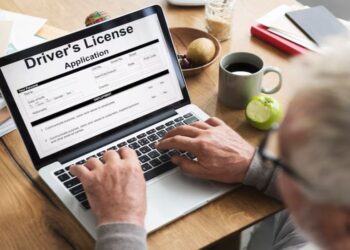Businesses actively use automatic call distribution to improve sales performance and increase lead generation. According to experts at Business Research Insights, such systems are expected to spread worldwide over the next eight years. Their report shows that this technology enhances customer service and streamlines company operations, rapidly gaining popularity.
Brands and solopreneurs often implement call recording functionality to insulate their businesses from lawsuits and maximize the benefits of automatic call distribution software. For companies, this is an excellent chance to boost productivity. However, from a legal standpoint, such practices must strictly comply with consumer protection laws.
Let’s delve further into the topic by answering these questions:
- Is call recording legal?
- What regulatory acts govern this issue?
- How can you legally document phone conversations to avoid legal breaches?
Read on to learn more about call tracking and customer data protection laws.
The Importance of Call Tracking Software in Advertising Campaigns
Why might call recording be important for you and your business? With call recording functionality, you can:
- Develop effective marketing campaigns. By focusing on the most popular inquiries from customers over the phone, you’ll better understand what they want and what issues they have. Armed with this knowledge, you can optimize ad campaigns to bring in more high-intent leads and address relevant problems while providing the best solutions for potential clients.
- Tailor more personalized services. Thanks to phone call tracking and recording, you’ll learn which group of buyers is more likely to contact you with certain issues. Consequently, your agents can create suitable marketing offers or formulate responses more accurately.
- Increase customer retention. You create a positive brand image by thoroughly analyzing problems and offering each customer an individual approach. Thus, customers will come back to you because you understand them implicitly.
- Train newcomers. You can use recordings to demonstrate to new agents how to handle different scenarios with customers. Therefore, newcomers can start working faster and reduce the number of unsuccessful conversations.
Finding a provider of call tracking services on the market is relatively easy. However, you can’t just start recording conversations with callers without their permission. Practically every country has its data protection laws regulating marketing calls. Therefore, you first need to obtain permission to record from the caller.
What Types of Consent for Call Recording Can You Obtain?
Before recording phone conversations with customers, as well as video conferences with partners or clients, you need to obtain special permission. There are four main types of such consent:
- One-party consent (or single-party): Permission to record is required only from one of the parties participating in the conversation. In this case, you don’t need consent from the other party.
- Two-party consent: In this case, you need to inform both parties that you want to record this conversation or video meeting. Then, you need approval from each party.
- Active consent: Before starting the conversation, send the caller a visual or auditory signal about the option to record the call. By pressing the approval button, you automatically obtain permission to record the phone call.
- Passive consent: It involves an audio or visual message stating that the conversation will be recorded. If your caller stays on the line, they automatically give their passive consent.
For example, in the USA, call recordings are regulated by the Electronic Communications Privacy Act (ECPA). However, each state has the right to determine the types of consent at its discretion.
TCPA Compliance: Recording and Making Calls to Customers in the USA
The Telephone Consumer Protection Act (TCPA) is also in effect to facilitate the management of telephone marketing calls in the USA. This document was enacted in 1992 and regulates the process of recording calls and making calls to subscribers in general. Due to the rapidly evolving technology industry, the law has been modified several times.
Currently, TCPA applies to standard methods: voice calls, text messages, and faxes. Additionally, the law regulates calls made using VoIP, Automatic Telephone Dialing System (ATDS), and similar methods.
Companies operating within the United States or remotely targeting U.S. audiences must have comprehensive compliance policies.
However, TCPA does not regulate all calls. There are exceptions, including:
- Calls to subscribers who have previously given their written or verbal consent to be contacted
- Call distribution from non-profit organizations for non-commercial purposes. For example, calls from charitable foundations or social projects.
- Emergency calls aimed at warning of danger to life or health. For instance, calls from medical institutions or public safety organizations.
- Calls that do not contain any sales components and are conducted solely to inform the customer
As we can see, U.S. call recording laws are designed to protect consumers from excessive telemarketing spam. Therefore, before making a call, you need to obtain prior express written consent (PEWC) from the customer.
GDPR Compliance: Mandatory for Businesses Targeting EU Audience
The primary document for customer data protection in the European Union is the General Data Protection Regulation (GDPR). It came into effect in 2016, and grants EU citizens control over their personal information.
According to GDPR, commercial companies must clearly and fully inform their customers about how their personal data will be used and processed. This includes call recordings made using a call tracking system. Additionally, organizations are required to ensure the security and confidentiality of recorded materials. They must also provide access to these files upon customer request.
GDPR data protection entails formulating a consent policy to obtain permission from the caller to record the conversation. It’s important to express this text in plain language in the document. Also, keep in mind that consumers can revoke their previously given consent at any time, and you are not entitled to refuse them. Furthermore, GDPR requirements include the following: teenagers under 13 can consent to call recording and information processing over the phone only with parental permission.
Remember that violating GDPR can lead to serious fines when entering the EU market. Therefore, it’s essential to carefully consider the strategy for using call distribution software with call recording functionality.
Regulatory Compliance Is the New Black
Automated call distribution is an excellent tool for improving service levels, increasing sales, and enhancing the productivity of sales agents. Recorded conversations are particularly valuable resources that provide insights into common issues and pains of your customers. However, for your B2C or B2B call tracking to yield effective results, it’s crucial to strictly adhere to consumer data protection laws.
In the USA, data protection regulation is described in the Telephone Consumer Protection Act (TCPA), while in the EU, it’s governed by The General Data Protection Regulation (GDPR). According to them, your company needs to obtain consent from the calling party to record the call. Additionally, you must inform the customer about how their personal information will be processed. Therefore, carefully consider the strategy for implementing automatic distribution and call-tracking software.









